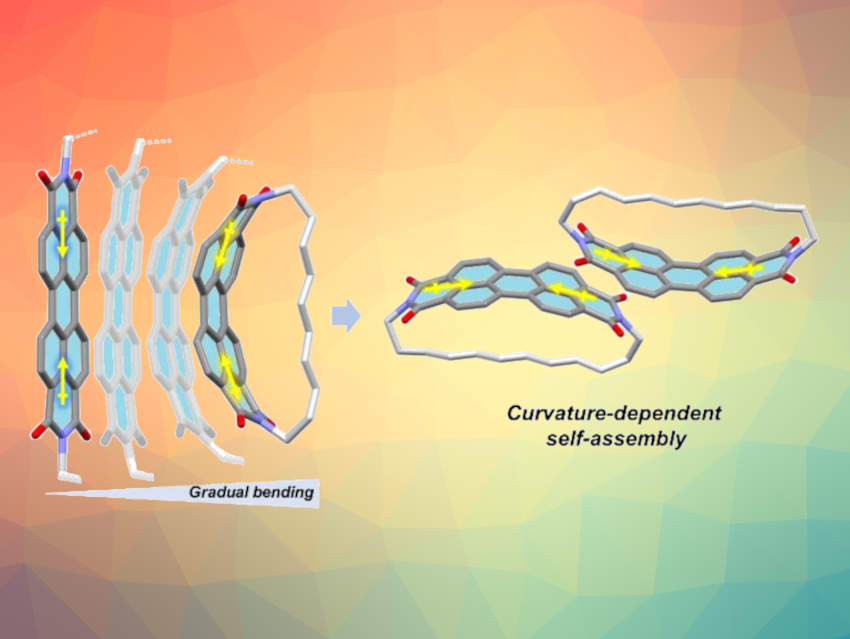The properties of functional materials with delocalized π-electron systems are by the characteristics of individual molecules, but also by the electronic coupling of π-systems arising from intermolecular interactions. Changing the structure of the molecules from planar to non-planar can also affect their properties, e.g., in compounds such as helicenes and other bent and/or twisted molecules. Investigating and understanding the interactions among such non-planar π-molecules can be an interesting research topic.
WanZhen Liang, Hui-Jun Zhang, Jianbin Lin, Xiamen University, China, and colleagues have studied the properties and π-stacking behaviors of a series of bent perylenediimides (pictured) with gradual changes in bending angles. To introduce different curvatures, the team used alkyl chains of different lengths which connect the two nitrogen atoms of each perylenediimide molecule. These bent perylenediimides were synthesized via a stepwise method: First, naphthalimide units were connected via the desired alkyl chains, and then the two naphthalimide units were connected to form the perylenediimide via an intramolecular Yamamoto coupling and a base-mediated cyclodehydrogenation.
With shorter and shorter alkyl chains, the perylenediimide becomes more and more heavily bent. The researchers achieved a progression from the planar unit up to ca. 46 ° along the series of synthesized compounds. They then investigated the π-stacking behaviors of the products and found a curvature-dependent self-assembly behavior. The planar and the “mildly” bent products show π-stacking interactions. In contrast, for the shortest alkyl chain, and thus, the most curved product, no π-stacking was observed. The work shows that changing π-molecules from planar to nonplanar structures can change the intermolecular forces and allow the realization of unique stacking patterns.
- Self‐Assembled Bent Perylenediimides,
Jianbin Lin, Rui Wang, Baiyang Qian, Yuchuan Xu, Di Zhao, Qiqi Chen, Yifei Wei, Cankun Zhang, WanZhen Liang, Yun-Bao Jiang, Hui-Jun Zhang,
Angew. Chem. Int. Ed. 2024.
https://doi.org/10.1002/anie.202421871




